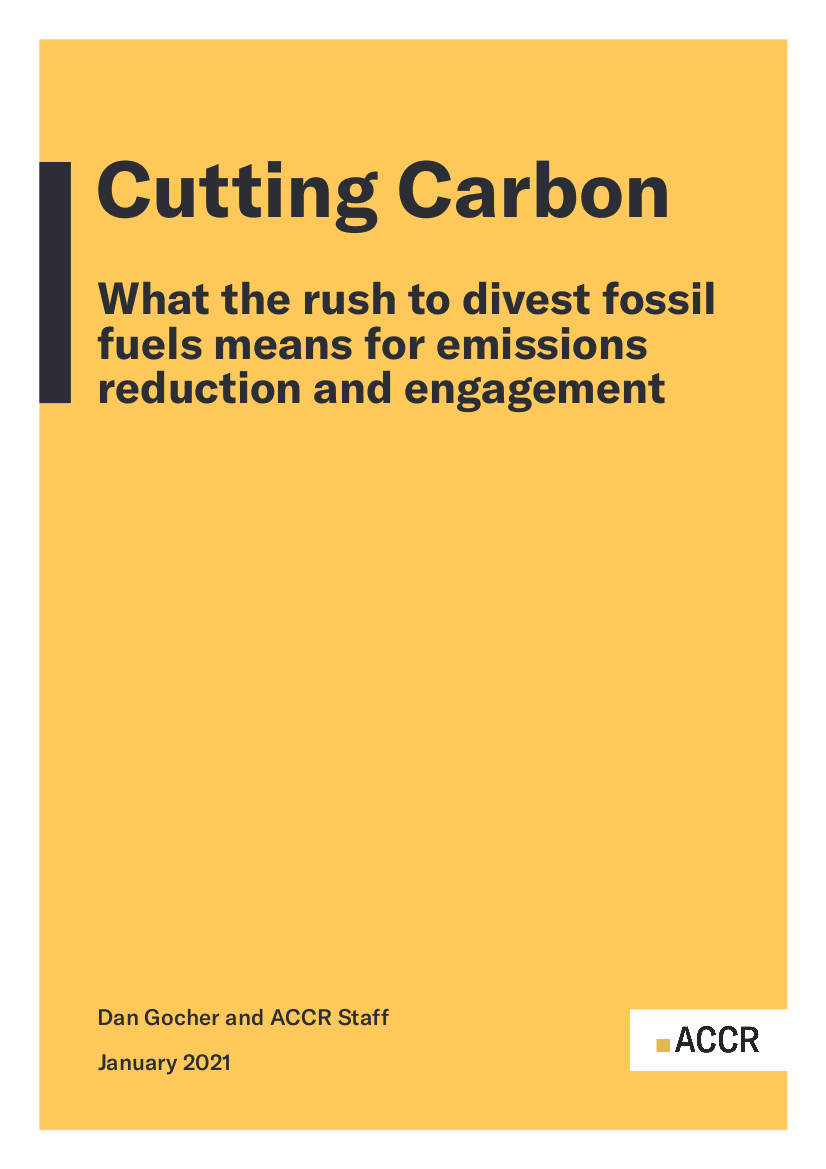Publication Cutting Carbon: What the rush to divest fossil fuels means for emissions reduction and engagement: 1. Executive summary
Throughout 2020, several major Australian investors committed to significantly decarbonise their portfolios, including by setting net-zero targets for 2050. Various asset owners and investment managers are debating the merits of different methods of achieving those targets, from investment in low- or zero-carbon technologies, to forceful stewardship with investee companies, to substantial capital reallocation and outright divestment. Previously, divestment from fossil fuels may have been viewed by some as a consideration for boutique ethical investors alone. Yet recent announcements indicate major investors have already begun divesting—a trend which is likely to continue.
This report focuses on the decarbonisation of listed equity portfolios in Australia. We outline current investor initiatives and commitments to support decarbonisation and energy transition. We explore the use of carbon exposure metrics to manage transition risk. We then consider the 25 largest emitting companies in the S&P/ASX200 index: their disclosure of carbon emissions, and their short-, medium- and long-term emissions reduction targets. The report concludes with an analysis of what investor commitments may mean for engagement with investee companies.
We consider that both engagement and divestment strategies will need to be deployed by active owners and managers in a rapidly shifting world, complemented by reinvestment in climate solutions. While we do not seek to reprise the debate between engagement and divestment through this report, we do highlight the issues with decarbonising listed equity portfolios by focusing on carbon exposure metrics alone, we find that:
Some investor initiatives are actively recommending divestment from, at least, distressed sectors of the coal, oil and gas industries;
Several Australian investors have made commitments that imply immediate or imminent divestment from some fossil fuels;
Carbon exposure metrics are an imperfect tool to measure climate risk, much less to base targets on;
Disclosure of carbon exposure metrics across Australian superannuation funds is limited and inconsistent, preventing meaningful comparison between funds;
Most of the companies responsible for the majority of the emissions in the benchmark S&P/ASX200 index are yet to commit to substantive emissions reduction targets by 2030;
There is a lack of clarity in investor commitments to date about the implications for divestment and engagement with investee companies.
Institutional investors have an enormous role to play in tackling the climate crisis, given their access to the tools of shareholder-company engagement, through which it is possible to exert sector-, economy- and world-wide influence. While numerous investors’ divestment announcements in 2020 may protect members in those funds from some climate-related risk, they must be complemented with a suite of other measures. Above all, forceful, outcomes-focused engagement in companies in which they remain invested and a clear path of escalation, with transparent signposting of actions and decision points.
Alongside public divestment actions, it is increasingly urgent that investors be accountable to their members and peers about the tools they are committed to using to engage with investee companies. This should also involve speaking clearly about the tools of engagement that are not being used.
Private meetings, during which company commitments are negotiated, are still the market standard approach to company engagement by investors, worldwide. In most markets, we are seeing increasing support for, and the occasional filing of, shareholder resolutions by institutional investors. However, coordinated attempts at board renewal, strongly contested public discussions about company strategy including red-lining projects or asset level wind-down, and legal avenues available to shareholders, are rarely deployed.
The deployment, in combination, of non-exhaustive approaches to engagement followed by divestment undersells the power and responsibility of the investment sector in addressing the climate crisis.
